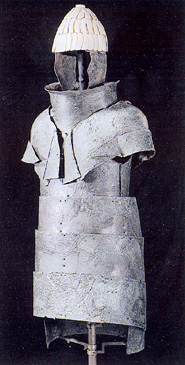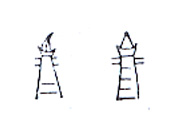Because the Dendra equipment is far too heavy and unwieldy for a foot soldier, some scholars believe its wearer would have stood in a chariot. But again the weight and cumbersomeness of the armour could not but have been a serious liability in a fast-moving chariot. Unlike the armoured medieval knight, the Dendra warrior was not seated on a high saddle with his legs gripping the sides of a horse, and his feet placed safely in stirrups: instead, if an archer never accompanied the charioteer, he was trying to maintain his balance while thrusting sideways with a two-handed spear.
The argument for the Dendra armour belonging to a chariot warrior is unconvincing. Apart from the weight problem, there are records of lighter corselets more suited to this purpose, similar to the protection Menelaus was lucky enough to be wearing at Troy. Most telling of all, however, is the narrative of the
Iliad, for Pandarus [an Eastern bowman in Trojan service who became convinced of the uselessness of his bow, and joined Aeneas on his chariot] did not fight from Aeneas' chariot as a thrusting spearman. On the contrary, he threw a javelin at Diomedes, a weapon used in addition to the bow by the Egyptians in their chariots. Pandarus' sudden death after the failure of this throw may well have seemed just to Homes, since the javelin as well as the arrow harmed heroes at an unfair distance, especially when launched from a speeding chariot.





 Reply With Quote
Reply With Quote












 " -alBernameg
" -alBernameg My Balloon!
My Balloon! 






Bookmarks